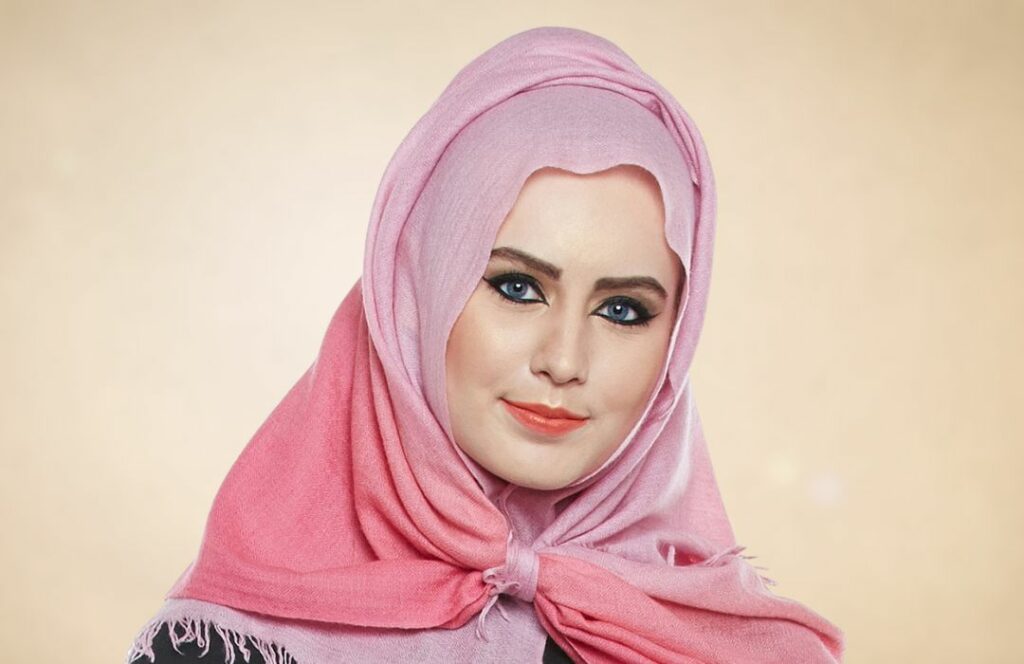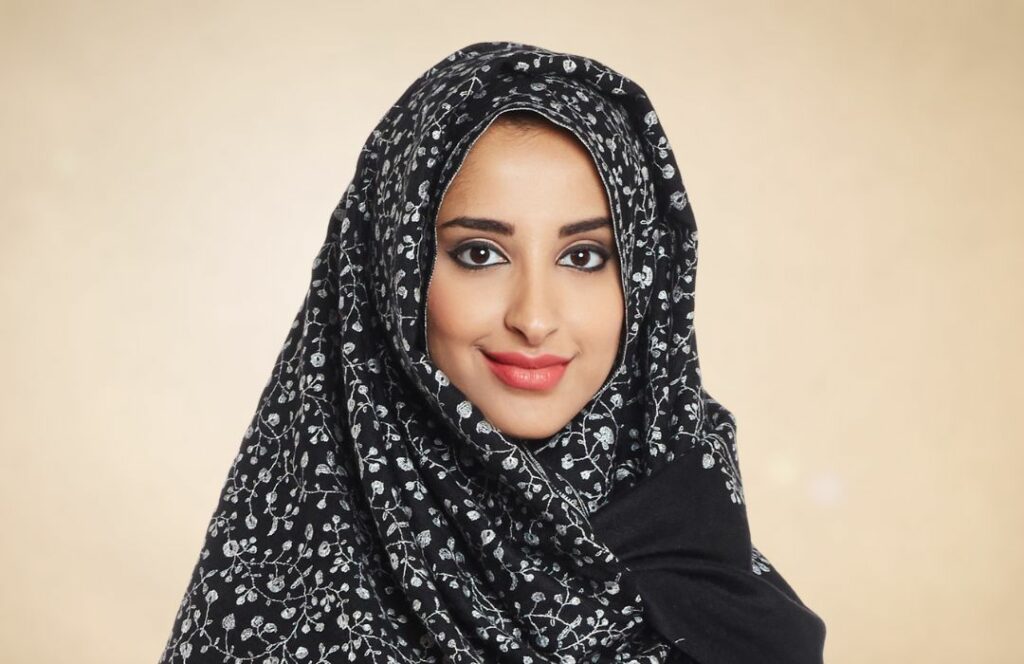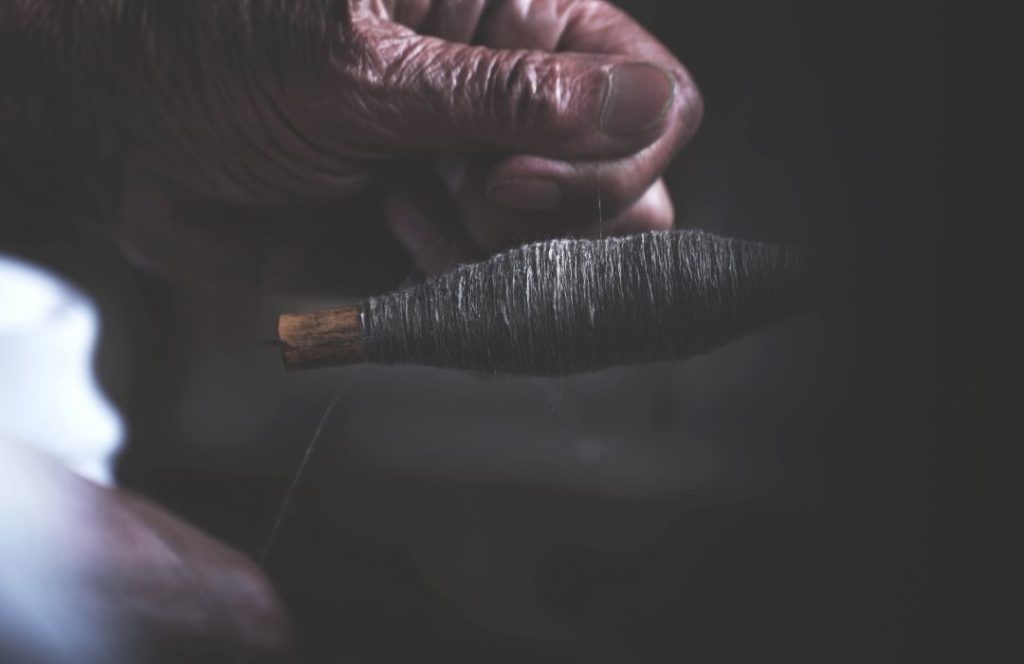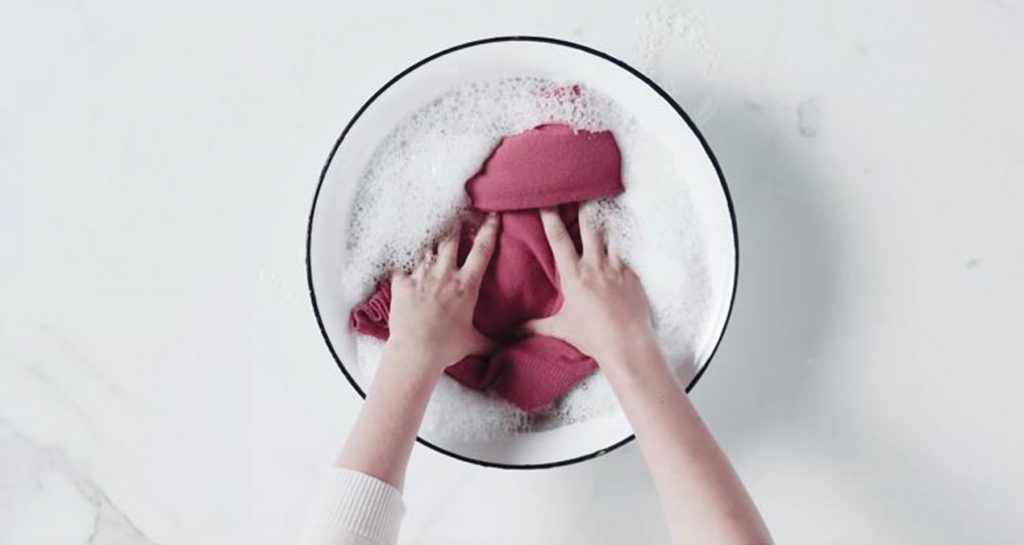Pashmina, with its unrivalled elegance and versatility, has long been a luxurious art form. Known for its exceptional softness and warmth, Pashmina has been a staple in the world of high fashion. It is often seen draped around the shoulders of the stylish and elite. Recently, there has been a growing interest in using Cashmere wool as a hijab. This trend highlights the fabric’s ability to blend tradition with modern style. Pashmina hijab would definitely offer a unique and luxurious option for hijab wearers.
Using Pashmina as a hijab is particularly relevant for those who seek both style and comfort in daily wear. For many Muslim women, the hijab is not just a piece of clothing but a significant part of their identity and faith. Finding a hijab that meets both aesthetic and practical needs can be challenging. As such, Pashmina emerges as a compelling choice due to its unique properties. Its lightweight nature makes it comfortable to wear for extended periods; its warmth ensures that it is suitable for various climates.
So, today, we aim to explore the suitability of Pashmina as a hijab. We will delve into the benefits it offers, including its unmatched comfort and style. Additionally, we will provide practical styling tips to help you incorporate Pashmina into your wardrobe seamlessly. Understanding the cultural significance of both Pashmina and the hijab will further enrich our exploration, shedding light on why this combination is gaining popularity.
So, let's walk through the world of Pashmina, discovering how this luxurious art form can enhance your hijab experience. Whether you are looking for an everyday option or something special for an occasion, Pashmina may just be the perfect addition to your collection.
What is a Hijab?

The hijab is more than just a headscarf; it is a significant symbol of faith, modesty, and identity for many Muslim women around the world. Derived from the Arabic word "hijab," meaning "barrier" or "partition," it traditionally refers to the practice of covering up, reflecting a commitment to modesty and privacy. While the term "hijab" can encompass a variety of coverings worn by Muslim women, it is most commonly associated with the headscarf that conceals the hair, neck, and sometimes shoulders.
Primary Purpose
The primary purpose of the hijab is to adhere to Islamic guidelines on modesty. For many women, wearing the hijab is an act of faith, symbolizing their devotion to God and their commitment to living a life of modesty and dignity. It is also a means of maintaining a sense of privacy and respect in public spaces. The hijab serves as a visible marker of a woman's religious and cultural identity, providing her with a sense of community and belonging.
Practical Considerations for a Hijab
When choosing a hijab, several practical considerations come into play to ensure comfort and suitability:
- Comfort: The fabric's texture and weight are crucial for comfort, especially for extended wear. People often prefer lightweight, breathable materials like cotton, chiffon, and Pashmina.
- Breathability: Breathability is essential, particularly in hot climates. Fabrics that allow air circulation help keep the wearer cool and comfortable.
- Suitability for Different Climates: In colder climates, thicker materials like wool or layered styles can provide additional warmth. Conversely, lighter fabrics better suit warmer weather.
- Ease of Styling: Some hijabs are easier to style and secure than others. Women often choose styles based on how quickly and securely they can be put on, considering their daily activities and lifestyle.
- Durability and Maintenance: The hijab should be durable enough to withstand regular wear and washing. Wearers highly value fabrics that are easy to care for and maintain their quality over time.
History and Significance of Hijab
The hijab, a symbol of modesty, privacy, and faith, has a long and rich history that traces back centuries. Its origins and evolution have deep roots in cultural, religious, and social contexts, making it a significant element of Muslim identity.
Historical Background
The concept of modest dressing for women predates Islam and traces to ancient civilizations. For instance, in pre-Islamic Persia, Greece, and Rome, veiling and covering were common among women of certain social classes as a sign of status and modesty. The practice of covering the head and body as a form of modesty was adopted and reinterpreted in the context of Islamic teachings.
Over time, the hijab evolved in style and practice across different Islamic cultures. In some regions, it became a mandatory practice, while in others, it remained a personal choice. The diversity in how women wear the hijab today reflects the various interpretations and cultural adaptations of Islamic teachings.
Cultural Significance
The hijab holds immense cultural and religious importance within Islam. It is not merely a piece of cloth but a profound expression of faith and obedience to God. For many Muslim women, wearing the hijab is an act of worship and a demonstration of their commitment to Islamic principles.
In addition to its religious significance, the hijab plays a crucial role in cultural identity. In many Muslim-majority countries, the hijab is a visible marker of Islamic culture and heritage. It is often worn during significant religious and cultural events, such as Ramadan, Eid, and weddings, symbolizing purity, modesty, and respect for tradition.
The cultural significance of the hijab extends beyond Islamic societies. In countries with significant Muslim populations, the hijab is a powerful symbol of cultural diversity and inclusivity. It fosters a sense of community and solidarity among Muslim women, creating a bond that transcends geographical and cultural boundaries.
Symbolism
For those who wear it, the hijab symbolizes several key values and principles:
- Modesty: The hijab embodies the Islamic principle of modesty, which applies to both behaviour and appearance. It reflects a woman's choice to present herself in a manner that aligns with her religious beliefs and values.
- Privacy: The hijab serves as a means of maintaining personal privacy. It allows women to control how much of their physical appearance is visible to others, providing a sense of security and comfort.
- Identity: Wearing the hijab is a powerful statement of identity. It signifies a woman's affiliation with the Islamic faith and her adherence to its teachings. It is a visible declaration of her religious and cultural heritage.
- Empowerment: Contrary to some misconceptions, many Muslim women view the hijab as a source of empowerment. It enables them to assert their autonomy and make a conscious choice about how they wish to be perceived by society.
- Spiritual Connection: The hijab is often seen as a means of strengthening one's spiritual connection with God. It is a constant reminder of one's faith and a commitment to living a life guided by Islamic principles.
Can You Wear Pashmina as a Hijab?

Affirmation and Suitability
Yes, you can definitely wear Pashmina as a hijab. Pashmina, made from the fine cashmere wool of Changthangi goats, is famous for its softness, warmth, and lightweight nature. These qualities make it an excellent choice for a hijab, providing both comfort and elegance. The fine fibers of Pashmina create a smooth and gentle texture that is soft against the skin, making it suitable for long wear. Its warmth is perfect for cooler climates, yet its lightweight nature ensures it remains comfortable even in milder weather.
Comfort and Practicality
Pashmina hijabs offer unparalleled comfort without sacrificing style. The breathability of Pashmina allows for good airflow, preventing overheating and making it a practical choice for various climates. Whether you're in a cool or warm environment, Pashmina adapts well, providing warmth when needed and remaining lightweight enough for comfort. Additionally, the versatility of Pashmina means one can easily style it in different ways to suit personal preferences and occasions. This adds to its practicality as a hijab material.
Style and Elegance
Pashmina brings a touch of elegance to any outfit, making it a popular choice for those who value style as well as function. Its natural sheen and draping qualities enhance the overall look, providing a sophisticated and polished appearance. Whether you prefer a simple, understated look or a more elaborate and decorative style, Pashmina can be adapted to meet your fashion needs. Its wide range of colours and patterns allows for creative expression, making it a versatile accessory that can elevate any ensemble. By choosing Pashmina as a hijab, you embrace both comfort and style, ensuring you look and feel your best.
Benefits of Pashmina Hijab
Softness and Comfort

One of the primary benefits of choosing a Pashmina hijab is its exceptional softness and comfort. Cashmere, which comes from the fine undercoat of Changthangi goats, is famous for its luxurious feel against the skin. The fibers are finer than regular wool, making Pashmina incredibly gentle and smooth. This softness ensures that wearing a Pashmina hijab feels like a treat, providing all-day comfort without irritation. Additionally, Pashmina is hypoallergenic, making it an excellent choice for individuals with sensitive skin or allergies. Its natural fibers minimize the risk of skin reactions, allowing for a comfortable and pleasant wearing experience.
Warmth and Insulation
Pashmina is celebrated for its ability to provide warmth and insulation, making it ideal for colder months. The fine cashmere fibers trap heat effectively, ensuring that you stay warm and cozy even in chilly weather. Despite its warmth, Pashmina is also lightweight and breathable, allowing it to regulate temperature effectively. This means that you can wear a Pashmina hijab in various climates, enjoying its warmth when needed without feeling overheated in milder conditions. Its natural insulating properties make it a versatile and practical choice for year-round use.
Versatility and Style
Pashmina hijabs come in a wide range of colours, patterns, and styles, offering endless possibilities for fashion and personal expression. Whether you prefer solid colours, intricate patterns, or vibrant prints, there is a Pashmina hijab to suit every taste and occasion. This versatility allows you to effortlessly incorporate Pashmina into your wardrobe, whether you're dressing up for a special event or opting for a casual everyday look. The flexibility of Pashmina also extends to its styling options. You can drape it in various ways, creating different looks to match your outfit and personal style. From simple wraps to more elaborate drapes, Pashmina hijabs can be styled to suit any occasion.
Durability
When cared for properly, high-quality Pashmina is incredibly durable and long-lasting. Despite its delicate appearance, Pashmina can withstand regular use and maintain its beauty over time. Proper care includes gentle washing, avoiding harsh chemicals, and storing it in a clean, dry place away from direct sunlight. By following these care guidelines, your Pashmina hijab will retain its softness, warmth, and vibrant colors for years to come. Investing in a high-quality Pashmina hijab not only enhances your wardrobe but also provides a durable accessory that stands the test of time.
How to Style Pashmina as a Hijab?
Choosing the Right Pashmina
Selecting the perfect Pashmina is the first step in ensuring that you achieve the desired look and feel. These tips answer the question "Can you wear Pashmina as a hijab". Here are some tips on choosing authentic, high-quality Pashmina shawls:
- Check the Label: Authentic Pashmina should be labelled as 100% Pashmina or a blend with silk (Pashmina-Silk). Be wary of labels that simply say "Pashmina," as they might be synthetic blends.
- Feel the Fabric: Genuine Pashmina is incredibly soft to the touch. If the fabric feels rough or scratchy, it’s likely not authentic.
- Look for a Fine Weave: High-quality Pashmina shawls have a fine, tight weave. Hold the shawl up to the light; if the weave is uneven or too loose, it might not be genuine.
- Check for Stretch: Authentic Pashmina has a slight natural stretch due to its fine fibers. If the shawl stretches excessively, it may contain synthetic fibers.
- Price and Source: Real Pashmina is an investment, so be cautious of prices that seem too good to be true. Purchase from reputable sources that guarantee authenticity.
Styling Techniques
Styling your Pashmina hijab can be a fun and creative process. Here are some step-by-step instructions for various wrapping styles:
Classic Wrap:
- Start with placing the Pashmina over your head, with one end longer than the other.
- Next, pin the shorter end under your chin.
- Now, take the longer end, wrap it around your head, and drape it over your shoulder.
- Lastly, adjust the folds to create a neat look.
Turban Style:
- Firstly, fold the Pashmina in half lengthwise.
- Second, place it over your head, with the middle of the shawl resting on your forehead.
- Now, cross the ends at the nape of your neck and bring them to the front.
- Lastly, twist the ends around each other and wrap them around your head, tucking the ends in securely.
Layered Look:
- To begin with, place the Pashmina over your head with equal lengths on both sides.
- Then, pin it under your chin.
- Next, take one side and drape it across your opposite shoulder.
- Lastly, take the other side and drape it over the first layer, creating a layered effect.
Suggestions for Different Occasions and Outfits
Pashmina hijabs can be styled for various occasions:
- Casual Wear: Opt for simple wraps or the classic wrap style with minimal accessories for a comfortable, everyday look.
- Formal Events: Choose Pashmina with intricate patterns or embellishments. The turban style or layered look can add a touch of sophistication.
- Work/Professional Settings: Stick to neutral colors and classic styles. The classic wrap with a neatly pinned under chin creates a professional appearance.
Care and Maintenance

To maintain the quality and longevity of your Pashmina hijab, follow these care tips:
- Washing:
- Hand wash in cold water with a mild detergent.
- Soak for 10-15 minutes, then gently agitate.
- Rinse thoroughly in cold water.
- Drying:
- Lay flat on a towel and roll up to remove excess water.
- Reshape and lay flat to dry away from direct sunlight.
- Storing:
- Store in a cool, dry place.
- Avoid hanging, as it can stretch the fibers. Fold and place in a breathable fabric bag.
Final Thoughts: Can You Wear a Pashmina as a Hijab?
A question often asked by patrons of Pashmina art is "Can You Wear a Pashmina as a Hijab". Well, from the discussion above we can answer - Absolutely! You can wear Pashmina as a hijab, and it’s an excellent choice for those looking for a blend of elegance and practicality. Pashmina’s suitability as a hijab lies in its unique properties—its exceptional softness, warmth, and lightweight nature make it a comfortable and stylish option. The fine cashmere fibers ensure that it drapes beautifully, providing a smooth and graceful appearance that enhances any outfit. Whether you're dressing up for a special occasion or going for a casual look, Pashmina can adapt to various styles and settings.
Comfort is a significant factor when choosing a hijab, and Pashmina excels in this regard. The natural breathability of Cashmere allows air to circulate, keeping you cool in warmer climates while still providing warmth during colder months. Unlike synthetic fabrics, Cashmere's natural fibers are hypoallergenic, making them suitable for those with sensitive skin. The versatility of Pashmina also means you can experiment with different wrapping styles to find what best suits your face shape and personal preference.
Can you wear a Pashmina as a hijab for style?
The aesthetic appeal of Pashmina is another reason why it makes a great hijab. Available in a wide array of colours, patterns, and designs, Pashmina allows you to express your individuality and match your hijab to any outfit. Whether you prefer solid colours for a minimalist look or intricate patterns for a more elaborate style, there is a Pashmina hijab to suit every taste. Its luxurious texture and appearance add a touch of sophistication to any ensemble, making you feel both fashionable and comfortable.
Wearing a Pashmina as a hijab combines practicality with elegance. Its softness, breathability, and versatile styling options make it an ideal choice for hijab wearers seeking comfort without compromising on style. Embrace the beauty and functionality of Pashmina, and enjoy the unique benefits it brings to your hijab collection.
Also read: How is Ladakhi Cashmere different from other Cashmere?
Conclusion
So, can you wear a Pashmina as a hijab? The answer is Yes. Pashmina’s softness, warmth, lightweight nature, and luxurious feel make it an ideal choice for hijab wearers looking for both style and comfort. If you are a hijab wearer seeking elegance and practicality, exploring Pashmina hijabs is a wonderful idea. Pashmina offers not only unparalleled comfort but also a versatile fashion statement that can enhance any outfit. Its breathability and adaptability to various climates ensure that you stay comfortable throughout the year. By choosing Pashmina, you embrace a blend of tradition and modernity, allowing you to express your unique style while honouring cultural values.
Choosing authentic Pashmina is crucial to fully enjoy its benefits and support the traditional craftsmanship behind it. Authentic cashmere wool comes from Changthangi goats and is handcrafted by skilled artisans, stands out for its quality and durability. By investing in genuine Pashmina, you contribute to the preservation of an age-old art form and the livelihoods of the artisans who create these masterpieces. Always look for reputable sources and be mindful of the characteristics that distinguish real Pashmina from imitations.
Also read: Handwoven Pashmina Supremacy